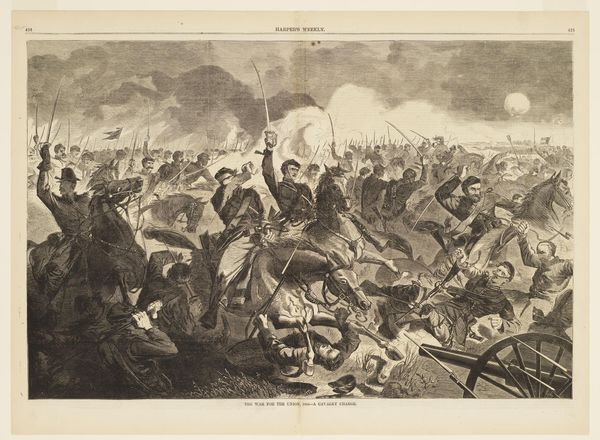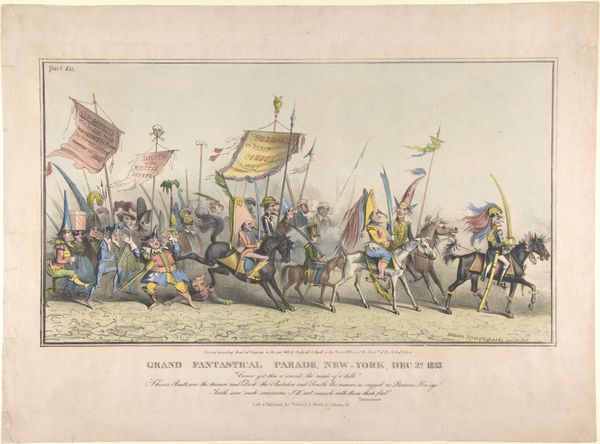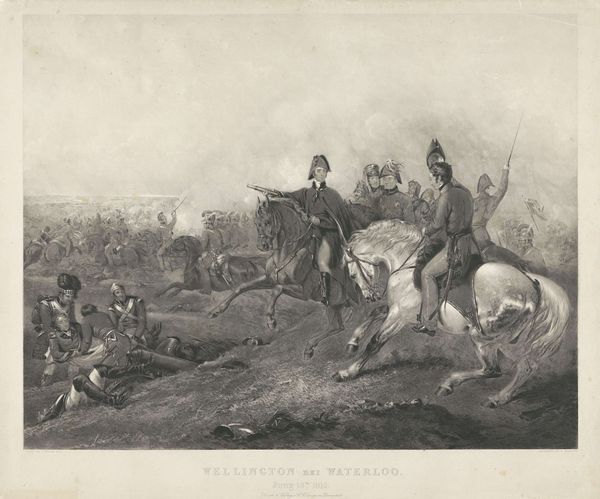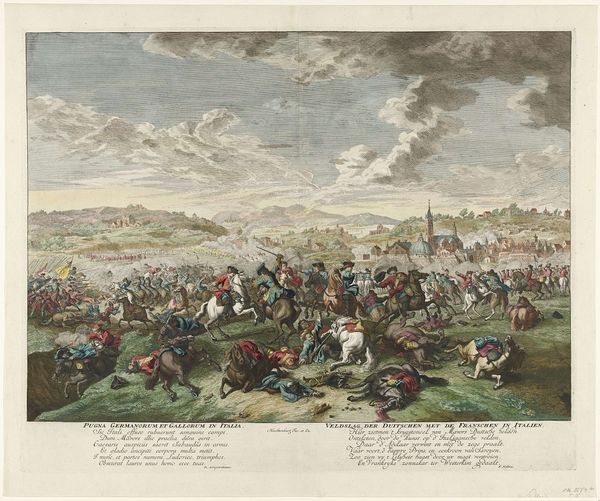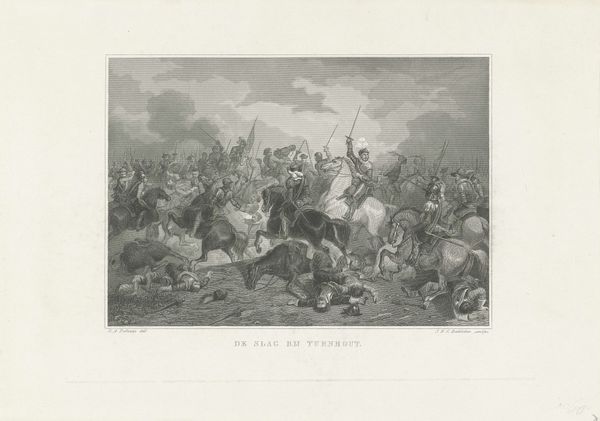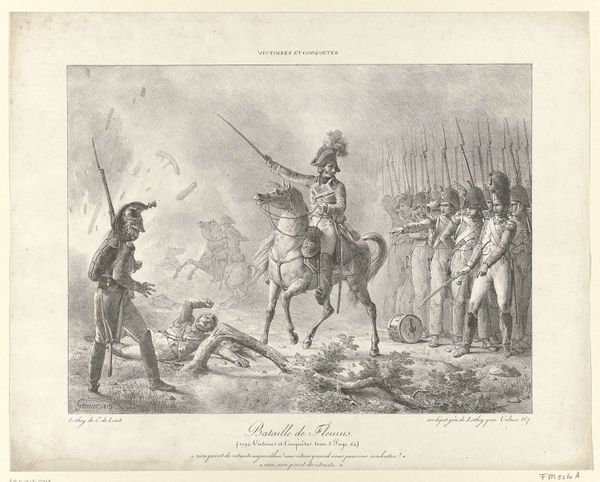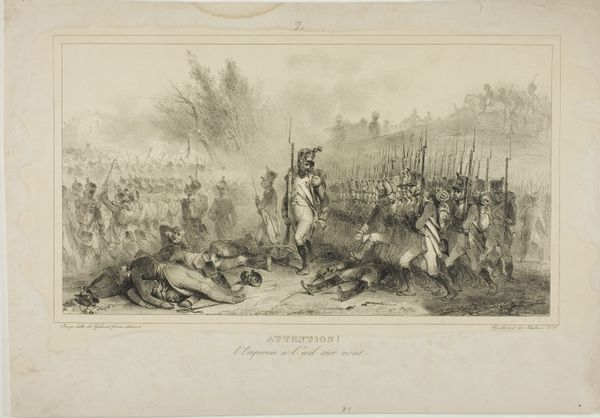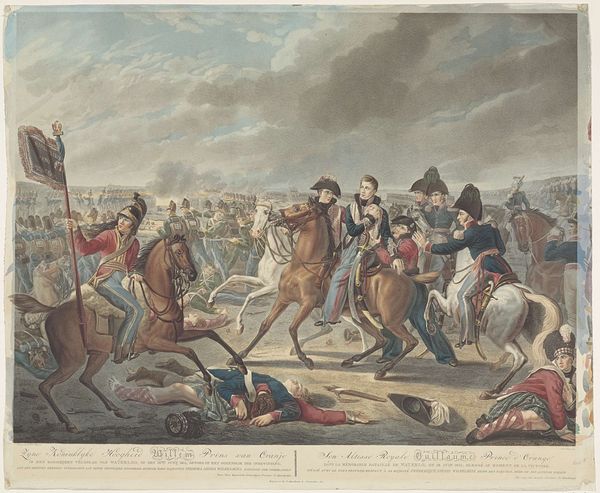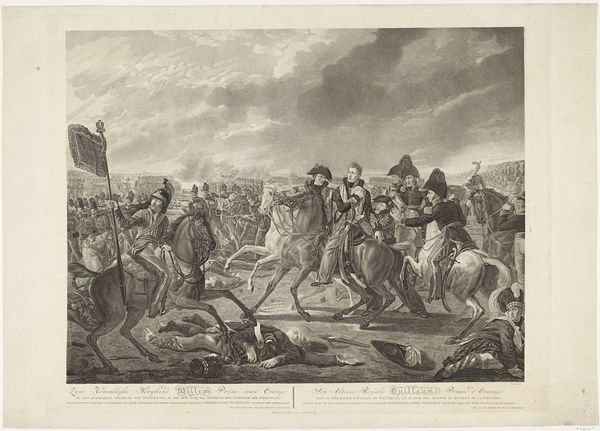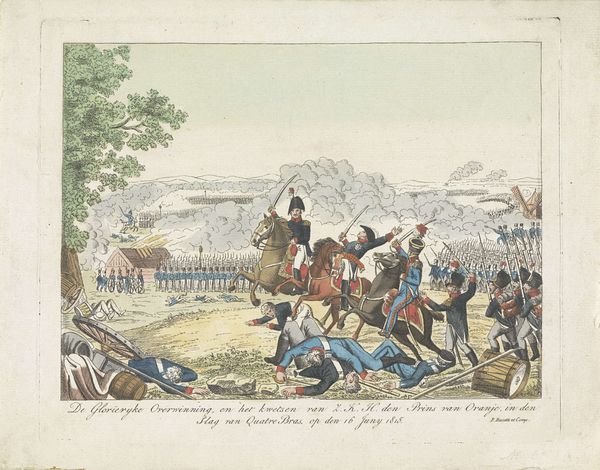
lithograph, painting, print
#
lithograph
#
painting
# print
#
landscape
#
oil painting
#
genre-painting
#
history-painting
#
realism
Dimensions: height 478 mm, width 608 mm
Copyright: Rijks Museum: Open Domain
Curator: Here we have "The Battle of Nieuwpoort, 1600." This lithograph, created sometime between 1825 and 1899, is on display here at the Rijksmuseum. Editor: The initial impact is one of sheer chaotic energy. It's a swarm of figures, dominated by horses, with that kind of muted coloring typical of older prints. Almost a brown tint throughout. Curator: Absolutely. The artist has constructed a complex tableau. Consider the way he has created depth, pushing a horizon of battling bodies back towards a hazy, distant line of troops. The formal composition directs our eye right to the flag held aloft amidst the turmoil. Editor: But even with that focal point, I'm struck by the tangible sense of labor it represents. Consider the making of this lithograph itself—the physical labor required to etch the stone, the layering of colors... and it depicts laborers of war. I’d even wager that much of its appeal resides in showcasing war's brutal, embodied, realities of its time. Curator: A keen point, yes, and consider, furthermore, the application of realism—almost documentary, but shaped to emphasize the valor and grandeur of battle, it presents an ordered interpretation amidst the evident disorder. Each fallen body seems meticulously rendered to convey the event’s gravity. The flags almost operate as symbolic gestures, signaling identity and resolve in equal measure. Editor: But the 'documentary' lens here is misleading. The choice to depict this historical battle in a contemporary printing process highlights the shifting value and interpretation of historical narratives through technological advancement, isn't it? A sort of modernizing myth-making via mechanization, we could almost say. Curator: Yes, there is definitely that play between history and the contemporary moment of its creation. The materiality—the printmaking medium—doesn't just record but actively shapes how we understand history and war, presenting the viewer a visual hierarchy to decipher power. Editor: It certainly reframes this 'grand' battle to emphasize production. Thanks to how it reveals historical narrative as itself made or manufactured, it allows for a potent viewing. Curator: An enlightening perspective indeed. A piece where historical grandeur is almost undermined by the very means used to represent it.
Comments
No comments
Be the first to comment and join the conversation on the ultimate creative platform.
